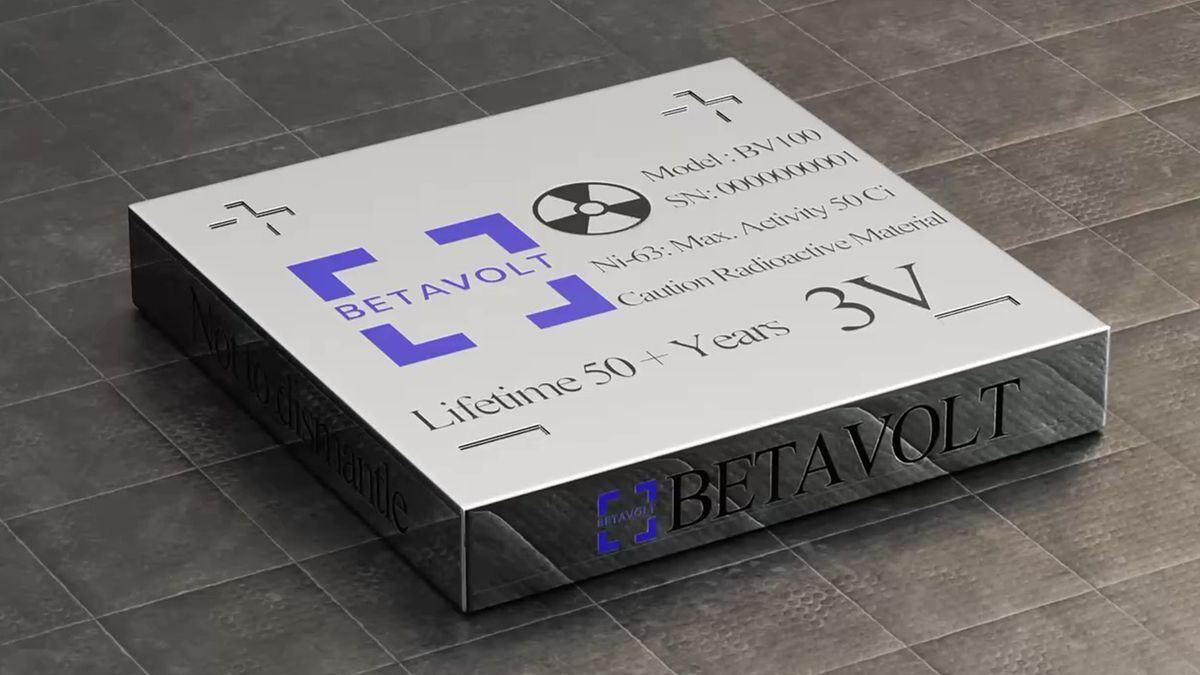- cross-posted to:
- [email protected]
- [email protected]
- cross-posted to:
- [email protected]
- [email protected]
That could is doing a lot of heavy lifting in that headline.
Also, we can barely get OEMs to support phones for 5 years now…
I’d say, 10 years is more than enough, the device is practically unusable after that, even if it’s still working.
the device is practically unusable after that, even if it’s still working.
Not if you can change the battery…
I am having to retire my 7 year old S5, which still works perfectly, because 3G networks are being switched off in a couple of months.
The S5 is from 2014 which this year makes 10 years.
Pons_Aelius says: “the device is practically unusable after that, even if it’s still working.”
You say: “Not if you can change the battery”
AND THEN YOU GO ON to tell that your 10 year old phone is working but practically unusable, confirming in the most spectacular way, that Pons was right all along, even matching your very own experience to the point and date! And you still started your argument against it.
It’s amazing really. Bravisimo.
It won’t work with modern apps in about 3 or 4 years, or even if it does, it’ll be so slow, it would practically be unusable.
I have an Asus Zenfone 3 Max from 2016. It has 8 cores @ 900MHz and 3GB of RAM. I only use it for BT auido streaming (play music on a modified audio system from the 90’s), that’s it. It can play YT videos at Full HD, but searching and screen flipping is so slow, it’s practically unusable. Everything is generally slow on it, even browsing. It takes like 10+ seconds to load a more complex page (with media). Sorry, but that’s unusable to me.
It won’t work with modern apps in about 3 or 4 years, or even if it does, it’ll be so slow, it would practically be unusable.
Maybe on Android… my iPhone is 5 years old and works better now (faster, more features, more apps) than it did when it was brand new. It has a 6 core CPU with two of the cores running at 2.65Ghz (the other four cores are 1.8Ghz) - plenty fast enough and fully supported by all the latest software. Really the only thing I’m missing out on is 5G. And wireless charging doesn’t have fancy magnets to hold it in place - oh well.
Upgrading to the latest model would give me the same number of CPU cores and about 20% higher clock speed and slightly more RAM - both barely noticeable. I would get a better camera - but I’m OK with this one for a bit longer.
I replaced the battery a few months ago, which was free - under warranty even after five years because Apple’s extended warranty can be paid monthly and lasts until you stop paying (and gets cheaper, as your phone ages). The warranty even covers accidental damage (screen repairs, etc).
That iPhone has at least double the CPU power my Zenfone has. Plus more cache, I presume. If I had double the CPU power I currently have on that thing, I would probably still use it.
Upgrading to the latest model would give me the same number of CPU cores and about 20% higher clock speed and slightly more RAM - both barely noticeable. I would get a better camera - but I’m OK with this one for a bit longer.
See, that’s the difference (one of them) between bying an iPhone and an Android phone. Android phones are usually a lot more powerful. I currently use a Xiaomi Redmi Note 11 Pro. 8 cores, 2.0GHz per core, 8GB of RAM, 128GB storage, 4 cameras on the back. And all that for 300€. No iPhone has those specs at that price. Sure, support is shorter, but why people throw that kind of money on something like a phone is beyond me. Still, it’s everyone’s personal choice, and I guess Apple can put in a battery in their devices that will last, oh, 20 years, if they really wanted to, but for most regular Android phones, 10 years is more than enough.
If this was an economically scalable proven thing today, phones wouldn’t be sold with batteries in 5 years.
It is doable, but it’s not practical. Technology moves so fast nowadays, a 10 year old i7 is easilly surpassed by a modern day i3.
Don’t get me wrong, I use old tech all the time, but it’s becoming increasingly impractical to do so.
Yeah so you’ll just move your battery from your i17 to your i18.
I was talking about desktop CPUs, but the same principle applies to any sort of SoC or CPU. What is “the best” today is surpassed within a month or two.
This is also why I usually buy second hand computer equpment. There’s no point, it’s extremely expensive the day it hits the market, and in a year, it’s like 1/3 of the price. This is especially true for GPUs.
Not all phones are smartphones. Theres still plenty of use cases for call/sms only phones.
And they don’t support anything higher than 3G, which will go in history in a few years… and then the only thing you can use them for is a paper weight.
Bollocks. Nokia 800 tough, 2660 flip, 2720 flip, 225 4g, 6300 4g, 8000 4g - just from one manufacturer, and there’s plenty of others.
They’re called burner phones. No real OS on them, no upgrade path, nothing. You wanna make phone calls and send SMS, that’s fine, but let’s face it, most people nowadays don’t use phones just for that.
Remember when light bulbs used to last decades? A phone battery that lasts that long is incompatible with capitalism.
When they were really dim and far too red like 80 years ago? Or when they switched to LED and actually lasted a decade, like now?
Batteries that last a decade will open up the opportunity for expensive tech like we never imagined.
Or when they switched to LED and actually lasted a decade, like now?
LEDs with Edison screws on them don’t last that long. Maybe Siemens or some other brand name manufacturer, but the cheap Chinese ones last only a few months.
It’s the heat buildup that’s the problem. Disassemble them, slap a CPU heatsink on it and yes, they will last forever.
Seems like a manufacturer problem. I’ve have the same LED bulbs in my house for 5 years plus with no replacements. Various makes too .Some of them came with me from my old house. No idea how old they are. With incandescent bulbs, I used to have to replace at least 1 a year. I used to keep a stock in the back of a cupboard.
The problem with led bulbs is that they are build to operate at their limits. It’s still within spec, but just barely which is why they break so quickly. If you would reduce the current by half they would last for decades.
But of course Big-Light doesn’t want that, so after the initial well-build led bulbs became standard they switched to cheaper designs with less internal led modules for the same brightness.
As I said, the simplest solution - better cooling.
I’m at 5 years with 12 that are on about 16 hours a day…
Make, model and price please.
You’re saying the cheapest possible products don’t last long, while the more expensive ones last for years? Can’t be.
Just saying… they weren’t advertised like that at all.
Here’s what I was referring to with the lightbulb thing and capitalism:
Here’s the summary for the wikipedia article you mentioned in your comment:
The Phoebus cartel was an international cartel that controlled the manufacture and sale of incandescent light bulbs in much of Europe and North America between 1925–1939. The cartel took over market territories and lowered the useful life of such bulbs. Corporations based in Europe and the United States, including Osram, General Electric, Associated Electrical Industries, and Philips, incorporated the cartel on January 15, 1925 in Geneva, as Phœbus S.A. Compagnie Industrielle pour le Développement de l'Éclairage (French for "Phoebus plc Industrial Company for the Development of Lighting"). Although the group had intended the cartel to last for thirty years (1925 to 1955), it ceased operations in 1939 with the outbreak of World War II. Following its dissolution, light bulbs continued to be sold at the 1,000-hour life standardized by the cartel.
The original Edison bulb still works iirc
The battery is not the main point of failure in contemporary phones, especially not one that makes you buy new unit. This new radioactive battery doesn’t change much
Sensationalized clickbait.
100 microwatts, aiming for 1W in 2025. That’s a big difference and 1W is still not enough for a cell phone. Phone-scale batteries aren’t even on the roadmap.
1 Watt is plenty to power a phone on average. While idle a phone uses less than 1 Watt. The thing is, nuclear batteries are a misnomer, they’re actual electrical generators. For this to work in a phone, you’d want to pair it with an actual battery, and the generator would charge the battery while the phone is idle and that would provide enough power on average for when you’re actively using your phone.
My thoughts exactly. Unless it can output at least double of what the phone’s max drain is, there is no other way.
1W is enough for a cell phone, if you combined it with a capacitor for brief bursts at higher watts.
Now play a game for an hour…
Not all phones need to play games and gaming phones don’t need to use this type of technology. I would love a phone that I don’t need to charge and most people could benefit from one. And for the select few that like to play intensive games on it then they can get ones that would need to be charged.
Though I doubt this technology will be the answer to that want though.
Yeah especially with just 0.001% of the estimated workload (~10W when gaming, but even when standby 0.5W, 100uW are still just 0.02% of that…). Needs a lot more research…
You throttle the cpu with long heavy workloads, just like phones already do due to the significant thermal constraints of the form factor.
My phone uses 0.6W when idle and 1.2-2.5W while I’m using it. Peaks are 8W+. No way an internal reactor only can power a phone.
Edit: 0.3W when screen is off.
A nuclear battery is not actually a battery, it’s a generator. Trying to run something purely off a generator is stupidly inefficient because you’d need the output potential for the max load at all times even when on average the load is much lower. You absolutely want to pair a generator with a battery. Even power plants have batteries to store excess power.
If you think a little past the name misnomer it’s obvious that this would work by pairing it with a smaller battery to handle spikes in usage. The end result is still the same though, you’d have a phone you’d never have to plug in.
What makes you think I didn’t think past the name? If my phone had a generator it would have a 8hr sot/day limit, it’d need a not so small 1000mAh+ battery to balance out night/day usage difference and still wouldn’t last an hour while gaming. That’s not an upgrade for me
You could do it with a parallelized output from a bunch of them.
Or with a diesel generator in a wheelbarrow
Looking forward to a mini reactor being directly next to my balls
“Just getting a little cancer, Stan.”
BUFFALO SOLLDYA
It’s not that radioactive and Nikel 63 decays to copper, so there is no radioactive waste being produced when the battery is depleted.
It’s a variation of the same scam: https://youtu.be/5M5MF6KE-jY?si=7odXF_9q2SkumX7X
https://www.sec.gov/litigation/litreleases/lr-25829
Betavolt seems to be just using those flashy 3D renders of a battery that likely doesn’t exist. It wouldn’t surprise me if their datasheets mirror what was claimed by NDB.
Here is an alternative Piped link(s):
https://piped.video/5M5MF6KE-jY?si=7odXF_9q2SkumX7X
Piped is a privacy-respecting open-source alternative frontend to YouTube.
I’m open-source; check me out at GitHub.
Oh, good. So whenever some fool tosses a phone out of a car to get crushed on the roadway, shoots one because TikTok, or otherwise mangles a phone, we now have a potential for radioactive material to be spread around?
No, read the article. It’s Nikel 63 and the decay is copper. It’s contained in a metal seal.
And Nickel 63 is… radioactive material
Yes, it is. Though safely contained in a metal case.
crushed on a roadway
shot
Ok, some impenetrable, invincible metal.
I do agree that it has to be titanium or something like that.
It outputs 0.1 milliwatts, can’t even power a single LED.
The size is smaller than a coin. Put enough of them in parallel and they’ll output enough power.
Yeah 5000 of them to get the 500 mW a smartphone needs in standby mode. 50000 if you want to power up the phone from stabdby (assuming it just uses 5 Watts)
It is the article that mentioned smart phones which is bullshit. This is a (probably expensive) battery specialized for extremely low power devices which need to run for many years. It will never be something that powers your phone.
The tech is really cool and there’s applications for such a battery - just not phones.
A lot of sensors/gauges in industrial applications are retrofitted with lorawan or similar remote readout capabilities right now. Battery life for these devices is already a big design consideration, especially since not all locations are easily accessible.
With a power source like this you would essentially charge a capacitor, use the stored charge to do a sensor read and short data burst, and then wait for the next charge.
They could eventually raise power levels. The tech can be further researched. We didn’t come to this Li-Ion battery capacity with no research.
I don’t need 50 years but 50 days (before recharging) would be cool
Some of the first pacemakers used radioactive batteries. We left that concept pretty fast. And that is considering you have to cut your patient open to change a pacemaker battery. This will not happen in commercial cellphones
I think so as well.
But, it would be nice if it could be applied to vehicles.
100 microwatts? What does a phone use, like 1W? So they are 4 orders of magnitude off? So phones need to become 10,000 times more efficient or the battery that much bigger?
Edit: Also what is the language of the article? “63 nuclear isotopes”, it sounds like they mean “63 [different/individual atoms of] nuclear isotopes” but do they mean “nickel-63” by this? It is very confusing. Nickel-63 also has a half-life of 100 years, so if the battery is supped to last for 50 years, it has to be producing twice as much energy on day one that is discarded?
Betavolt is planning to boost its tech to produce a 1-watt battery by 2025. And while it still has some way to go, the company seems confident stating development is way ahead of European and American scientific research institutions and enterprises.
RemindMe! 1 year repeat
This is physically implausible. Also self proclaimed advances without 3rd party proof are less than worthless.
Yeah, I thought I was expressing my doubt with the “repeat” part of my Remindme joke, but I guess it wasn’t appreciated.
Yeah, like to get four orders of magnitude more they must get some real problems. 1. They have to find some isotope that decays very differently, faster/higher energy decays, which should mean more dangerous materials and inconsistent output over time. 2. It might be true that their 100 microwatt battery is fairly resistant to impact and cannot be manipulated to produce some explosion. But if you have a battery with 10,000 times the energy, like the energy equivalent to several modern EV car batteries in your phone? I would really start to doubt it.
Fallout universe timeline, here we come!
This again? It’s utter bullcrap I’m afraid.
Here is an alternative Piped link(s):
https://piped.video/watch?v=5M5MF6KE-jY
Piped is a privacy-respecting open-source alternative frontend to YouTube.
I’m open-source; check me out at GitHub.
Others pointed this out as well. It seems it is a scam, but it might become a viable solution in the not so distant future (10 years or so from now).
50 Ci? That’s a helluva lot of activity.
And that’s for a battery that only produces 100 microwatts. A battery that produces 10000 times more power will be a lot spicier.
Perfect, my phone will outlast me
Depending on how radioactive the battery in your pocket is, that’s not hard.
These tech articles on some new advancement are basically the same phenomenon of bullshit as articles ending in a question mark. The answer is always “nah”
















